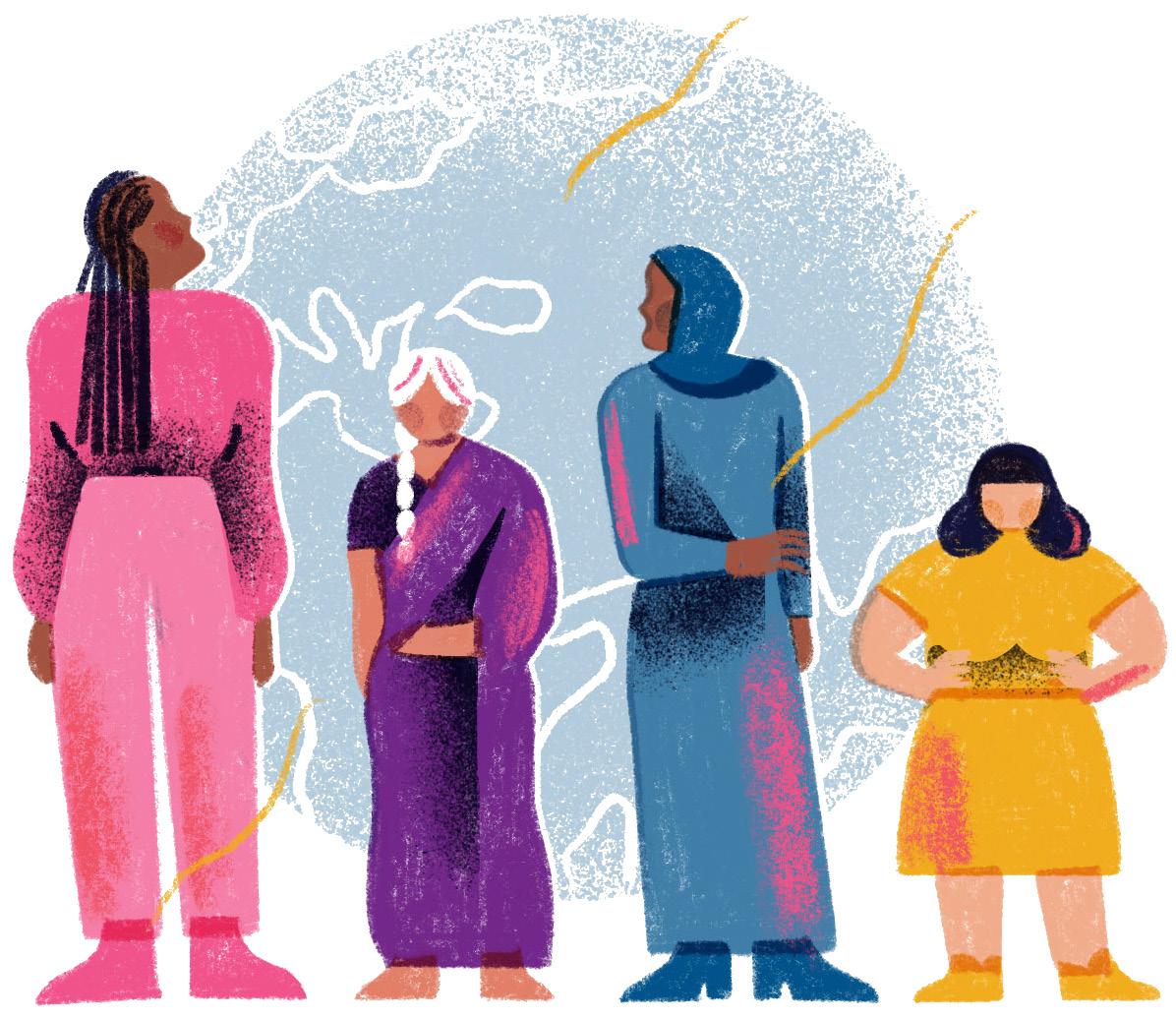
3 minute read
STRENGTHENING THE DESIGN, IMPLEMENTATION & EVALUATION OF CEDAW-ALIGNED LAWS
Governments should
Strengthening the design of CEDAW-aligned laws relating to health
Advertisement
• Review and analyse existing laws to identify where laws do not align with human rights best practice and make changes to the design of laws to ensure they are health-promoting
• Consider the weaknesses of laws, including how they are likely to be contravened, foreseeable risks, legal loopholes and unintended consequences
• Draft strong and appropriate penalties for non-compliance that do not further disadvantage women or increase their vulnerability to poverty
• Consider women’s obstacles to enjoying the protections guaranteed by laws due to stigma, discrimination, cost and other barriers
• Assess the gender-responsiveness of current health-related laws for women using existing tools (e.g., the Gender Legislative Index, UN Women’s Handbook for Parliamentarians and Handbook on GenderResponsive Law Making)
• Consider how laws in different sectors (e.g., inheritance laws, customary law and anti-poverty laws) may interact and work together to shape women’s health or result in unintended consequences
Incorporating CEDAW into governance arrangements supporting health-related laws
• Adhere to guidance documents and handbooks dedicated to governance across the UN machinery to ensure appropriate and best-practice governance arrangements are supporting health-related laws
• Ensure CEDAW’s principles are reflected in economic and fiscal priorities, incentives and non-legal agreements that governments are using to implement and operationalise laws
• Ensure CEDAW is reflected in the way implementation is resourced and supported (including through judicial, administrative, budgetary, economic and other measures)
• Use the implementation research by CSOs and academia on the reach, effectiveness and acceptability of health-related laws to inform reform efforts
• Evaluate the effectiveness and acceptability of health-related laws resulting from gender mainstreaming programs, from the perspectives of women
• Use the CEDAW review process to disseminate design features and implementation strategies that have improved women’s health and health access, as well as strategies that have failed
Maintaining & reforming CEDAW-aligned laws relating to health
• Prioritise funding through national research councils for the evaluation of women’s health laws using robust methods to identify laws as important health interventions
• Work with CSOs and research organisations to evaluate the acceptability, sustainability and effectiveness of laws in improving health and social outcomes, then use these data to reform the design of laws and/or implementation strategies
Redressing the balance: Using human rights law to improve health for women everywhere
Making sure CEDAW-aligned laws relating to health work in practice
• Engage with CSOs regarding the comprehensiveness of laws and women’s lived experiences of the legal systems
• Introduce legislation criminalising gender-based violence in concert with education programs, including its cultural and structural drivers to lay the groundwork for effective laws; such programs should be delivered in ways that reach all ages, genders and levels of literacy
• Motivate compliance and cooperation within government to build support and respect for laws; this includes establishing shared expectations so that government actors act in ways that are conducive to the law’s goal
• Invest in social programs alongside laws to support their effectiveness
FIGURE 1: LAWS PASSED OR AMENDED IN EACH REGION
Laws Passed Or Amended In The African And Eastern Mediterranean Region
Each shape represents a law that has been passed in these four categories:
Each shape represents a law that has been introduced in these four categories:
Each shape represents a law that has been passed in these four categories:
Gender Based Violence Gender Based Poverty t
Redressing the balance: Using human rights law to improve health for women everywhere
Laws Passed Or Amended In The Americas Region
Each shape represents a law that has been passed in these four categories:
Each shape represents a law that has passed in these four categories:
Gender Based Violence Gender Based Poverty Refugee & Migrant LGBTQIA
Laws Passed Or Amended In The Europe Region
High Upper middle Yes
Lower middle Low Countries that have not passed one of the relevant laws
Each shape represents a law that has been passed in these four categories:
Gender Based Violence
Gender Based Poverty
Each
Gender Based Violence
Gender Based Poverty Refugee &
Redressing the balance: Using human rights law to improve health for women everywhere
LAWS PASSED OR AMENDED IN THE SOUTH-EAST ASIA AND WESTERN PACIFIC REGION
High Upper middle Yes
Lower middle Low Countries that have not passed one of the relevant laws
Each shape represents a law that has been passed in these four categories:


